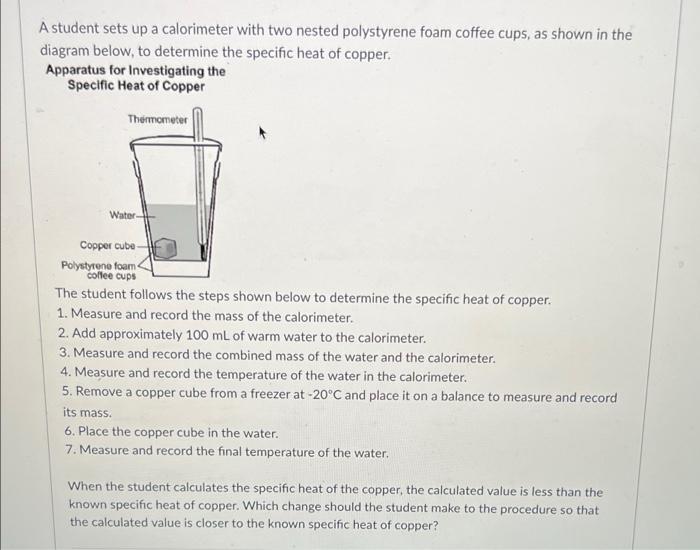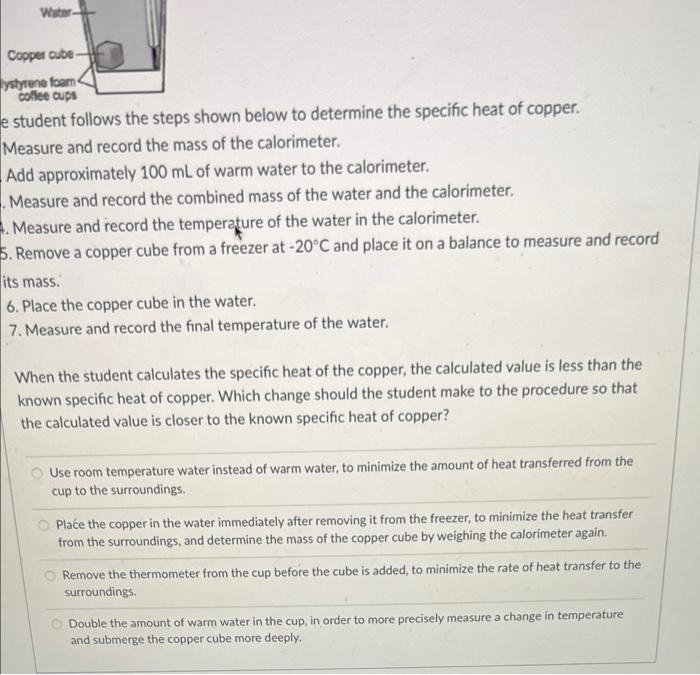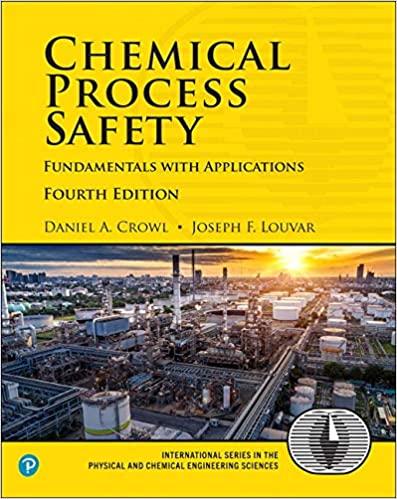A student sets up a calorimeter with two nested polystyrene foam coffee cups, as shown in the diagram below, to determine the specific heat of copper. Apparatus for Investigating the Specific Heat of Copper Thermometer Water- Copper cube Polystyrene foam coltee cups The student follows the steps shown below to determine the specific heat of copper. 1. Measure and record the mass of the calorimeter. 2. Add approximately 100 mL of warm water to the calorimeter. 3. Measure and record the combined mass of the water and the calorimeter. 4. Measure and record the temperature of the water in the calorimeter. 5. Remove a copper cube from a freezer at -20C and place it on a balance to measure and record its mass. 6. Place the copper cube in the water. 7. Measure and record the final temperature of the water. When the student calculates the specific heat of the copper, the calculated value is less than the known specific heat of copper. Which change should the student make to the procedure so that the calculated value is closer to the known specific heat of copper? Water- Copper Cube ystyrene foam coffee cups He student follows the steps shown below to determine the specific heat of copper. Measure and record the mass of the calorimeter. Add approximately 100 mL of warm water to the calorimeter. Measure and record the combined mass of the water and the calorimeter, Measure and record the temperature of the water in the calorimeter. 5. Remove a copper cube from a freezer at -20C and place it on a balance to measure and record its mass. 6. Place the copper cube in the water. 7. Measure and record the final temperature of the water. When the student calculates the specific heat of the copper, the calculated value is less than the known specific heat of copper. Which change should the student make to the procedure so that the calculated value is closer to the known specific heat of copper? Use room temperature water instead of warm water, to minimize the amount of heat transferred from the cup to the surroundings. Place the copper in the water immediately after removing it from the freezer, to minimize the heat transfer from the surroundings, and determine the mass of the copper cube by weighing the calorimeter again. Remove the thermometer from the cup before the cube is added, to minimize the rate of heat transfer to the surroundings Double the amount of warm water in the cup, in order to more precisely measure a change in temperature and submerge the copper cube more deeply








